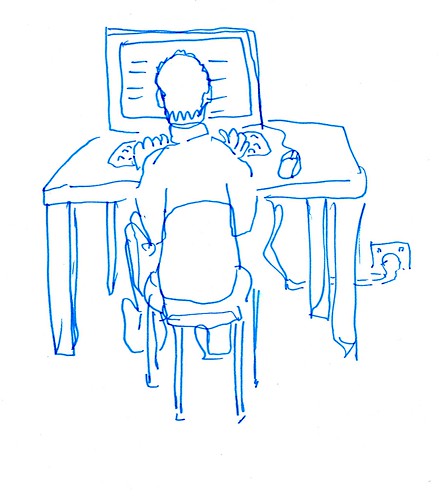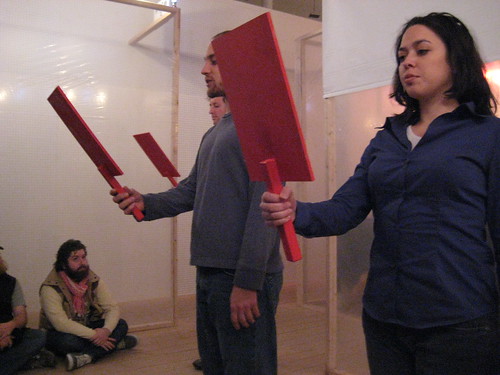[for related discussion, see this thread].
sigh. i gotta be overseas:…..
Marina Abramovic (re)performs works by Vito Acconci, Bruce Nauman, FF
Alumns, at the Guggenheim Museum, NY, April 8, 9.
Symposium
This two-day symposium is a prelude to the performance and exhibition
project Marina Abramovic: Seven Easy Pieces, scheduled for fall 2005, in
which the artist (re)performs and reinterprets seminal works from the 1970s
by Vito Acconci, Joseph Beuys, Valie Export, Bruce Nauman, Gina Pane, and
herself.
(Re)presenting Performance
FRI APR 8, 48 PM and SAT APR 9, 10 AM6 PM
A series of panels comprised of art historians, artists, choreographers,
filmmakers, and curators investigates the various histories of performance,
the plausibility of its repetition, and the urgency of its preservation.
Performance artists active during the 1970s are interviewed individually
about these issues, and younger artists discuss the impact of their legacy.
For more information, call the Box Office at (212) 423-3587.
Information at: (scroll to bottom of page)http://www.guggenheim.org/education/tours_lectures.shtml
======
reviews of the forum (the re-enactments themselves will occur in October 2005):
Marina Abramovic Plays With Herself: Re-Performing Others, Engaging the Audience, by
Theresa Smalec:
"Her decision to repeat specific pieces that influenced her work by redoing their original scores provoked symposium panelists to ponder: "What does it mean to re-enact a performance that was only supposed to happen once?" This seemed like an abstract speculation until the Guggenheim's curator addressed Abramovic with a flustered expression and whispered, "Why re-perform Vito Acconci's Seedbed as a woman?" Nervous laughter emanated from the audience. Abramovic calmly replied, saying it was partly the "taboo element" that intrigued her, and partly the "sculptural element." Too young to have witnessed Acconci's 1972 performance, I desperately tried to visualize the nature of the piece that people were chuckling about. Seedbed sounded seedy, but in an exhilarating way. What specific actions were required to re-embody it?"
<http://www.nyartsmagazine.com/pages/nyam_document.php?nid=749&did=2305>
======
(Re)Performance at the Guggenheim, by Rodrigo Tisi:
"In the early days of performance art there was resistance to the idea of documentation, since the presence of a camera would rub up against the sacred fleeting moment of the event. But just as that pious attitude has faded, so too might the resistance to the idea of re-performance, and the merger of performance art with theater. There is a kind of brutal unsentimentality in the prospect of re-performance: performance art must admit that it is already a codified genre, without the marginal charm it once had. It's not a young discipline any more; it has to decide how it wants to grow up."
<http://www.nyartsmagazine.com/pages/nyam_document.php?nid=749&did=2312>
======
Reperforming the Score, by T. Nikki Cesare:
"The danger in this experiment lies in the subtle divide that occurs between composers and performers in Western classical music. That is, even though a woman's performance of Corporel might offer an entirely different reading of the piece, and even though the "open works" by such canonized composers as Cage, Boulez, Ligeti, and Stockhausen grant the performer more agency, allowing performance art to be defined by its originator rather than the body in the immediate moment of performance might not only compromise the sociopolitical context in which it is (re)performed, but also the autobiographical and intensely personal relationship between piece and performer, and performer and spectator. Perhaps the way to negotiate this divide is to re-evaluate both genres, establishing that the ephemerality that enables performance art to retain its political and personal impact also informs musical and theatrical, and visual art performance. The score, then, like the body, becomes the map by which the audience finds, or loses, their way. Either possibility opens up a Pandora's Box of opportunity."
<http://www.nyartsmagazine.com/pages/nyam_document.php?nid=749&did=2311>


